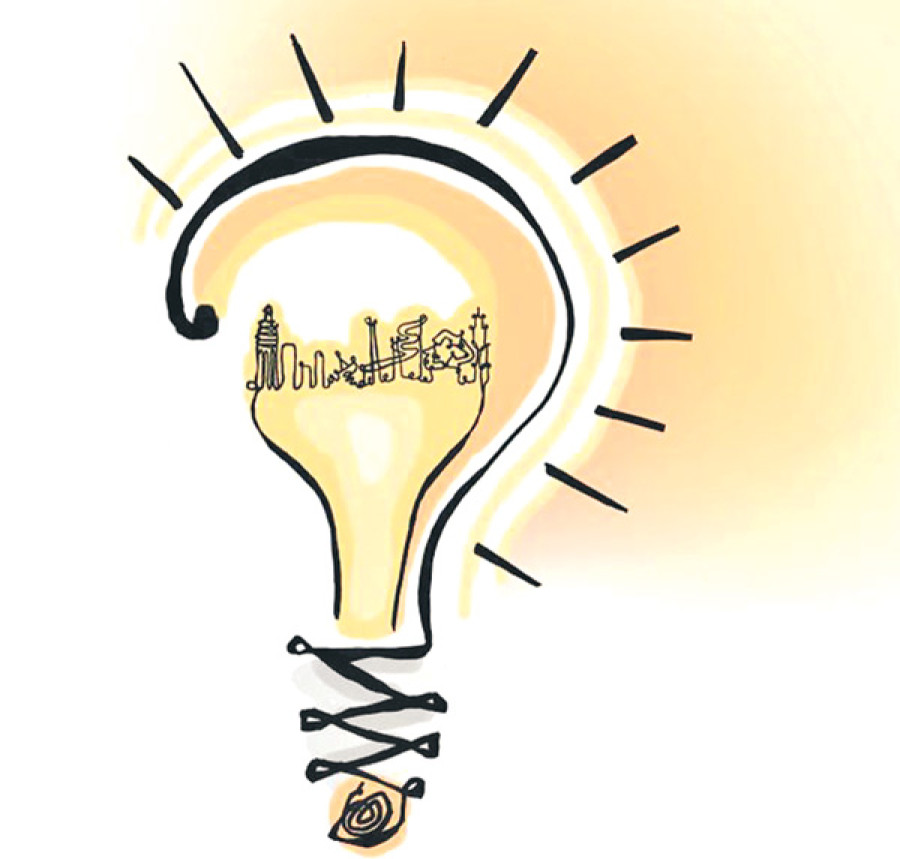Opinion
Dante’s Inferno
Navigating the congested streets of Kathmandu, one of the most polluted cities in the world, is never a pleasant experience.
Bimal Pratap Shah & Shyan Kirat Rai
Navigating the congested streets of Kathmandu, one of the most polluted cities in the world, is never a pleasant experience. The situation has become so unbearable that some commuters have even gone so far as to compare the metropolis’s traffic congestion to an inferno—any place or state resembling hell. Despite the chaos, the government is yet to come up with revolutionary solutions to turn the inferno into a paradise.
Inferno also happens to be the title of one of the most anticipated movies of this year. The film, directed by Ron Howard, is based on a Dan Brown’s 2013 mystery thriller novel by the same title. In the movie, a bone cylinder fitted with a high-tech projector somehow ends up with Professor Langdon, played by Tom Hanks. The projector, when turned on, displays a modified version of Botticelli’s Map of Hell based on Dante’s Inferno. What worries the professor is not the Map of Hell, but a shocking message that appears at the bottom of the projection. The cryptic writing, it seems, is a warning of some sort to our species.
The projector is left behind by a brilliant geneticist who commits suicide after being chased by agents working for the World Health Organisation. The genius developed a new type of biological plague virus designed to kill a large portion of the world’s population believing that this would be the final solution to the problem of over population. The geneticist did so for he believed humanity is slowly moving towards extinction and it is necessary to save humankind from taking a destructive path. And, the movie revolves around the professor’s search for the virus.
Interestingly, the term ‘inferno’ comes from Dante Alighieri’s epic poem—Divine Comedy. The poem depicts nine circles of suffering located within the earth. According to Dante, “it is the “realm...of those who have rejected spiritual values by yielding to bestial appetites or violence, or by perverting their human intellect to fraud or malice against their fellowmen.” Looking at horrific events unfolding every day around the world, one would not be wrong to conclude that Dante’s depiction of hell is what the world is slowly turning into.
Smart cities
The world will soon be an overcrowded place, or it already is. It is estimated that the world’s urban population will surpass six billion by 2050, with 64.1 percent of the developing world and 85.9 percent of the developed world residing in urban settings. However, no matter how serious the problem of overpopulation is, ‘inferno’ should never be the solution. As a matter of fact, the mega crisis of environmental sustainability brought about by the trends of rapid urbanisation can only be managed if cities and nations innovate at the speed of thought. We feel the only way forward is for the government to adopt digital technologies to create smart cities that are liveable, efficient and stress-free. Furthermore, there is no doubt that Smart Cities are a more humane alternative to an inferno when it comes to managing modern day megalopolises. The concept of smart cities came about in 2008 when IBM, an American multinational technology company, began work on its Smarter Planet Initiative. South Korea, Singapore and the Netherlands are some of the countries where the idea has been successful. South Korea’s Songdo International Business District (IBD) is a new smart city built from scratch on 600 hectors of reclaimed land. The Songdo IBD was developed as a part of an effort to promote green and low-carbon growth future where smart technologies are part of the city’s DNA. In Europe, wireless devices have been installed across the city of Amsterdam to collect and communicate the data used in real-time decision-making. India, too, is not far behind. The largest democracy has selected 20 cities to turn into smart cities based on a proposal developed through the Smart City Challenge using various criteria provided by the Indian Ministry of Urban Development.
However, a country that is taking the smart-city idea to a whole new level is Singapore. The city-nation is installing sensors and cameras everywhere, so that the government can monitor everything from the cleanliness of public spaces to the precise movement of vehicles.
The new sexy
In a nutshell, besides using digital technologies, smart cities should have an excellent public transport system, be green and pedestrian-friendly, use an intelligent traffic management system, provide electronic government services and have world-class infrastructure, to name a few. Come to think of it, an efficient public transport network is essential to encourage the public to reduce using private vehicles. Similarly, pedestrian and bicycle-friendly environment is necessary for green living.
An intelligent traffic management system to manage congested traffic and deliver government services over the internet are hallmarks of smart cities. Smart cities should also provide safety from natural disasters. Moreover, problems associated with pollution, electricity, sewage and water-supply should be a thing of the past there.
Smart is the new sexy, but for cities to be truly smart, the era of smart government has to start first. So until and unless the government of Nepal becomes a smart government, smart cities and Silicon Valley type start-ups are unlikely to take off anytime soon. Rhetoric aside, if things are to change for good, the Ministry of Urban Development has to think out of the box to come up with radical policies and revolutionary solutions so that the Kathmandu Valley can be turned into a truly smart city.
Shah is the co-author of ‘Strategic IT Planning for Public Organizations: A Toolkit’ published by the UN in 2009; Rai is pursuing a PhD at the Indian Institute of Technology (IIT), Mumbai




 14.12°C Kathmandu
14.12°C Kathmandu











